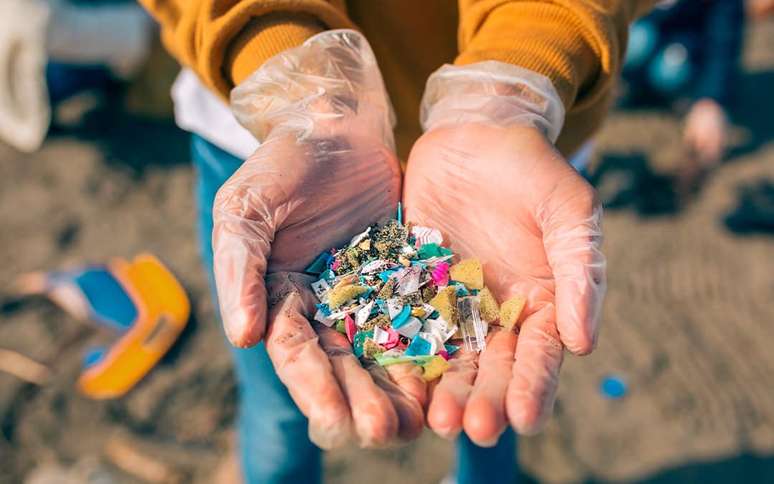Scientists have found that exposure to microplastics is associated with lower sperm quality
Summary
Microplastics are linked to male infertility and may be one of the factors behind the global decline in male fertility observed in recent years.
Present in various consumer products, microplastics are defined as particles smaller than 5 mm resulting from the degradation of plastic. These pollutants are widespread in ecosystems and have been detected in various human tissues, including the liver, lungs, placenta and, more recently, in the semen and urine of men. The problem is that this could be related to male infertility.
“50% of cases of infertility in couples are linked to a male factor, either exclusively (30%) or associated with a female factor (20%). And although most cases of male infertility have an unknown cause, we know that lifestyle habits and environmental factors play an important role. So it is possible that microplastics are involved, and they could be one of the causes of the worldwide decline in male fertility that we have observed in recent years,” explains Fernando Prado, a specialist in human reproduction and member of the American Society for Reproductive Medicine. (ASRM) and clinical director of Neo Vita. A recent study have shown this association with male infertility.
Microplastics enter the human body through ingestion, inhalation or absorption through the skin. The study explored microplastic exposure in men in different regions of China and took place between November 2023 and March 2024. Inclusion criteria required participants to be over 18 years old and have been in a relationship for more than a year without getting pregnant. A total of 113 male volunteers participated in the study, with an average age of 32 years.
Microplastics have been detected in semen and urine samples from volunteers. The types of microplastics identified included polystyrene (PS), polyvinyl chloride (PVC), polypropylene (PP), polyethylene (PE), polytetrafluoroethylene (PTFE), polyethylene terephthalate (PET), polycarbonate (PC), and acrylonitrile butadiene styrene (ABS).
“Polyethylene is the most produced type of plastic, used in everything from food packaging and plastic bags to toys. So it’s no surprise that this was the type of microplastic most present in the testicles. This reinforces the importance of conscious production and disposal of plastic used in everyday life, since, according to evidence, there is a high probability that it will end up in our bodies,” warns the expert.
Analysis of the relationship between microplastic exposure and seminal parameters showed that microplastic exposure was associated with a reduction in total sperm count and progressive motility. “A low concentration of sperm in the semen, a condition known as oligospermia, seriously affects the chances of pregnancy, as it makes it difficult for the egg to be naturally fertilized,” explains the doctor.
A dose-response relationship was observed, where an increase in the number of microplastic types led to a significant decrease in total sperm number, progressive motility and sperm concentration. Participants exposed to six types of microplastics had lower total sperm counts and progressive motility than those exposed to fewer types.
“Unfortunately there is not much that can be done to reduce our exposure to microplastics. Evidence suggests they are present in multiple places, from your water bottle to the air. Findings like this are essential to raise awareness about the risk of this exposure, and the impact is particularly worrying on younger generations. Therefore, it is important that measures are taken to reduce pollution of the environment by these components,” concludes Fernando Prado.
inspires transformation in the world of work, in business, in society. Compasso, a content and connection agency, is born.
Source: Terra
Ben Stock is a lifestyle journalist and author at Gossipify. He writes about topics such as health, wellness, travel, food and home decor. He provides practical advice and inspiration to improve well-being, keeps readers up to date with latest lifestyle news and trends, known for his engaging writing style, in-depth analysis and unique perspectives.









